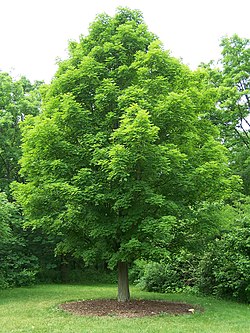 Ziiga'igaans (maple sugar cubes) being made in a ziiga'iganaatig (sugar press-mould) | |
| Type | Confectionery |
|---|---|
| Place of origin | Canada and the United States |
| Main ingredients | Sap of the sugar maple tree |

Maple sugar is a traditional sweetener in Canada and the Northeastern United States, prepared from the sap of the maple tree ("maple sap").


